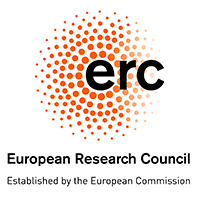About the project
Fashioning Sudan. Archaeology of dress along the Middle Nile
Fashioning Sudan will study ancient garments and dress practices as a new approach to unveil past Sudanese identities.

100 years of archaeological research along the Middle Nile has yielded partial knowledge of the history of Sudan and Nubia. To date, the focus has been on the public life of the sedentary elite while other identities remain difficult to recognise and cultural frameworks often restricted to binary oppositions (e.g. sedentary vs. nomads, Pharaonic vs. African influences). Going beyond the monumental remains, Fashioning Sudan will focus directly on the people and on the way they chose to portray themselves to the world. Using garments as a privileged medium, the project will work on bringing more representative knowledge about the populations of ancient Sudan and highlight the entanglement of dress practices in the fabric of society. We will follow these dynamic processes over c. 4000 years of Kushite, Nubian, and Sudanese history, from the Bronze Age kingdom of Kerma to the Medieval period (c. 2500 BCE to 1500 CE).
Fragile organic materials are exceptionally well preserved in the dry sands of Sudan and Nubia. Fashioning Sudan will focus on clothing items: as they resulted from long and complex manufacturing processes and went through multiple life-cycles, these specific artefacts offer exceptionally broad and far-reaching information. The choice of raw materials indicates the available natural resources and economic performance, while technology informs us of craft techniques, production methods, and labour skill and training. The garments themselves belong to specific dress traditions and reflect body conception and social status, while their archaeological context of discovery (often funerary) points toward burial rites. Fashioning Sudan will lead a pioneering analysis of the immense yet often forgotten collections of textile and animal skin garments, uniting methods from the humanities, the social sciences, and the natural sciences. It will explore ancient Sudanese clothing and reveal how such diverse populations purposely selected resources, techniques, forms, and ornaments, weaving their own identities and embedding in their garments their relations to nature and the society.
The project consists of a team specialised in the study of ancient textiles and animal skins discovered in arid environment, merging fibre identification by microscopy and palaeoproteomic methods to the reconstruction of garment assemblages in tombs and in iconography. A collaborative research methodology and digital solutions will solidly anchored artefacts and analytical results to the archaeological and historical contexts, so as to map the rise and fall of dress practices and articulate diverse narratives of identity along the Middle Nile valley.
Funding
ERC Starting Grant 101039416.
Project period: 1 September 2022 - 31 August 2027
PI: Associate Professor Elsa Yvanez

